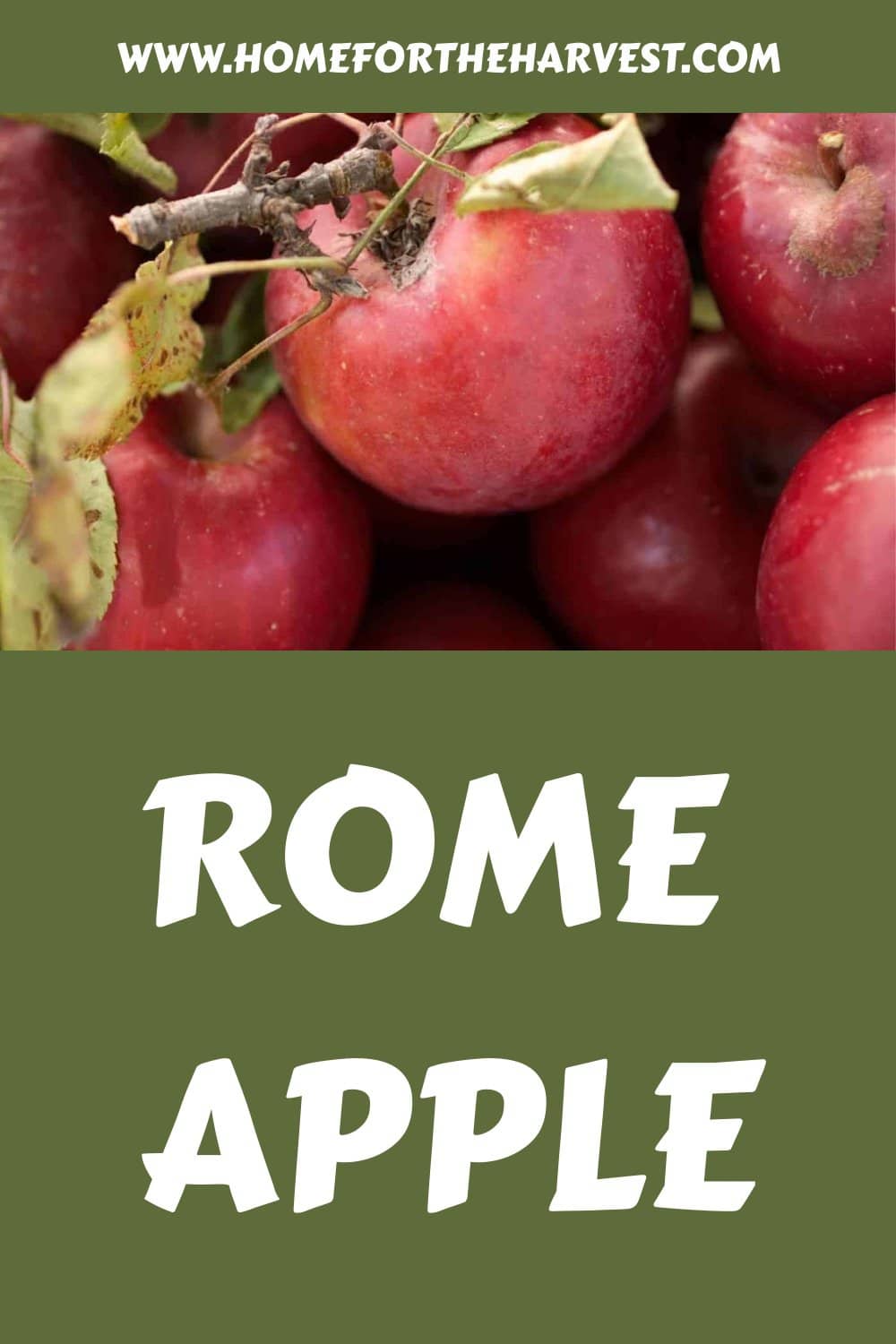The Rome apple is an American heritage variety known for its bright red peel and firm texture. These apples are prized as baking apples in the USA, where their slightly sweet and complex tangy flavor creates a delicious pie filling (or apple crisp, or apple crumble).
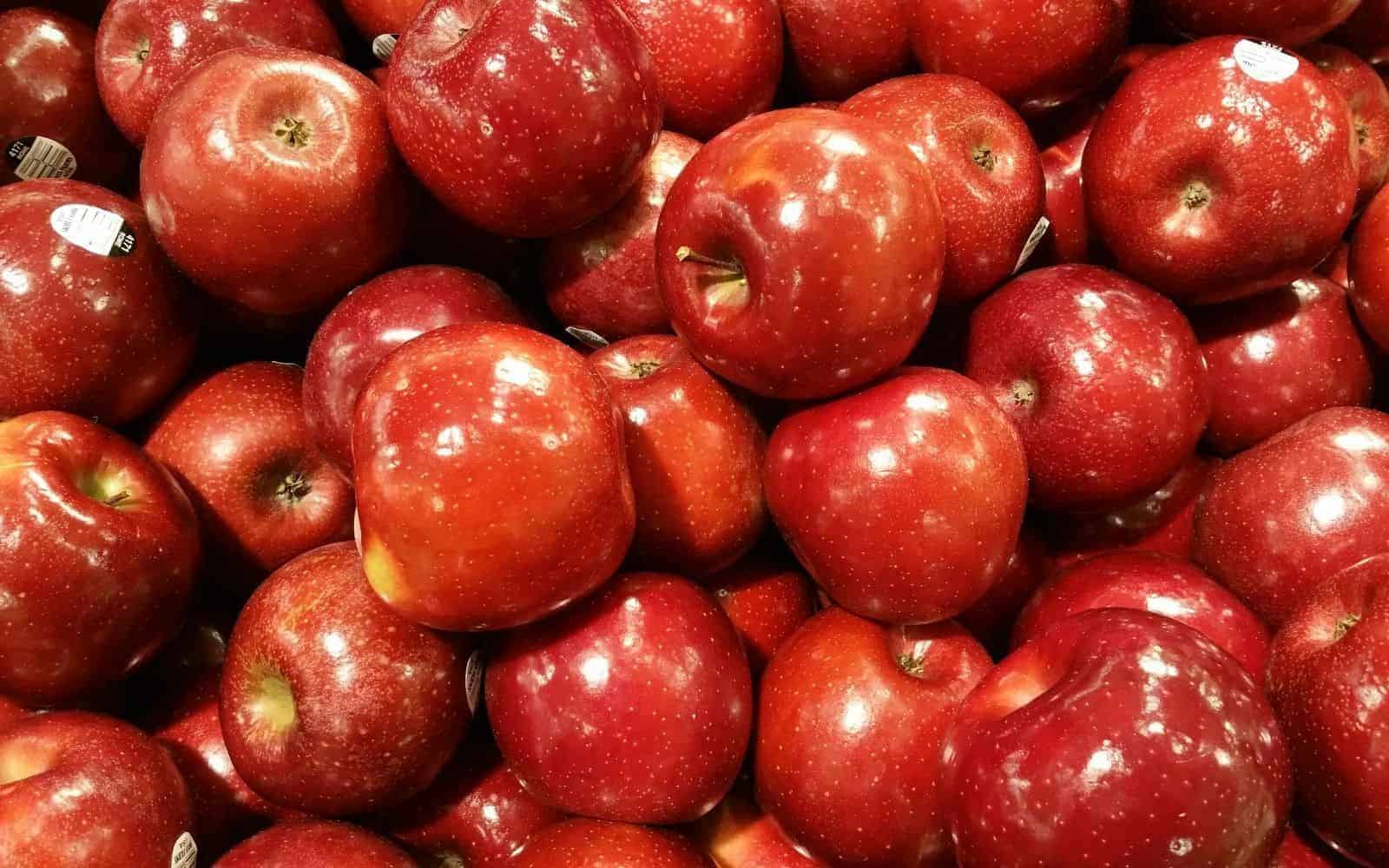
Rome apple basics
The Rome apple was discovered by American farmer Joel Gillett and his son Alanson in Ohio around 1817. It is now one of America’s great baking-type apple varieties due to their firm texture (they hold their shape well).
These shiny red apples are rarely eaten fresh and are instead saved for baking delicious pies and other baked goods. Fortunately, Romes are excellent keepers and can be kept in cold storage for up to six months (at least).
Rome apples have a floral aroma and a dry, starchy texture when eaten fresh. They also have very thick skin, which is usually discarded before cooking. That said, these apple peels shine after being roasted or baked in the oven.
Despite being discovered over two hundred years ago, Rome apples are still one of the more popular apple varieties in older orchards in the USA. They are also a common backyard apple tree, especially in Ohio.
Commercial growers like the trees as they are self-fruitful and tend to bloom late in the spring, making them dependable producers in areas with late spring frosts. Shoppers love the bright red peel and the long shelf life, as well as Rome’s excellent reputation as a top-notch baking apple.
“It tastes awful when fresh, but that dry gumminess is exactly what made it a famous cooker. In fact, this beauty was long known as “Queen of the Baking Apples” and “Baker’s Buddy.” Peeled and concentrated in a pie or crisp, it blossoms.”
Apples of Uncommon Character: Heirlooms, Modern Classics, and Little-Known Wonders, by Rowan Jacobsen
Origin of the Rome apple
Rome apples are named after Rome Township in Ohio. This variety was discovered by chance around 1817 by farmer Joel Gillett.
Mr. Gillett noticed a sprout coming up from the rootstock of one of the apple trees he purchased and gave it to his son Alanson to grow. Even two hundred years ago, apple trees were sold as named varieties grafted onto the sturdy rootstock of another variety. The unnamed rootstock variety that sprouted up would go on to become the famous Rome apple.
Rome apples are called many different names. When they were first discovered, they were known as Gillett’s Seedling. Now they are known as Rome apples and sometimes referred to as Red Rome or Rome Beauty apples.
“In 1816, Putnam Nursery sold a number of grafted trees to Joel Gillett of Proctorville, Ohio, which is in the township of Rome. One of these trees had sprouted below the graft union and Gillett gave this unknown variety to his son, Alanson Gillett. It produced large attractive apples which Alanson called “Rome.”
Apples of North America: Exceptional Varieties for Gardeners, Growers, and Cooks, by Tom Burford
Inner and outer appearance
Rome apples have a very dark, glossy red striking peel on the outside. Sometimes they have a slight greenish-yellow background, and other times paler pink vertical lines appear.
The inside flesh is white to pale cream-colored. The core has brown-black seeds that appear in a star-like shape if you cut the apple in half horizontally.
Rome apples are medium in size, typically ranging from 2 to 3 inches in diameter.
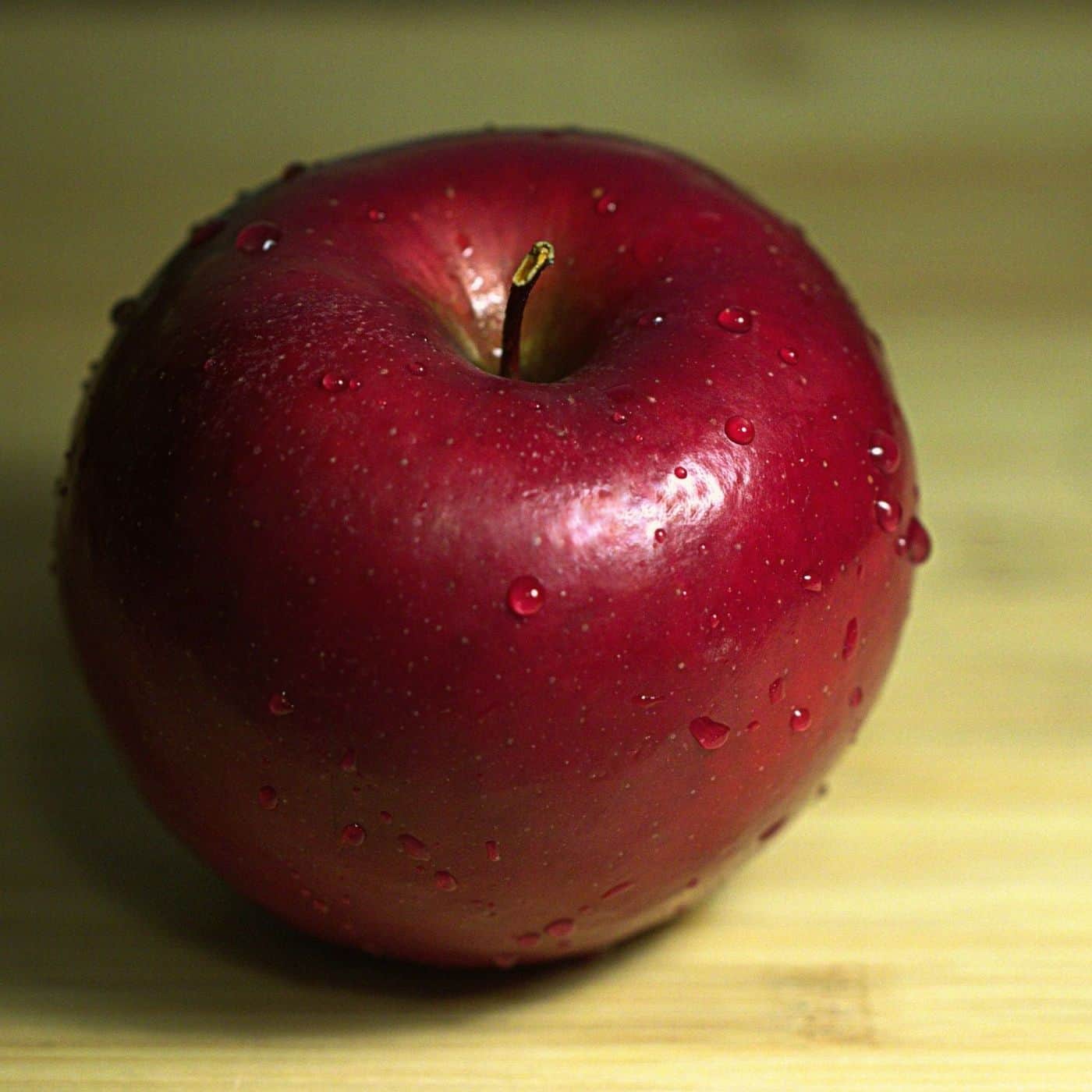
Harvest season
Rome apples are a mid-season fall apple variety. The ripe apples are most often harvested from the trees in late September or early October.
After they have been harvested, they are either sent to grocery stores around the United States or placed in climate-controlled cold storage. Romes are among the best storage apple varieties available and can be stored over winter for use in baking in the spring.
Growing regions
Rome Apples are still grown in Ohio, where they are mostly marketed as “Rome Beauty”. This variety is also grown commercially throughout the Midwest and into Washington and Oregon.
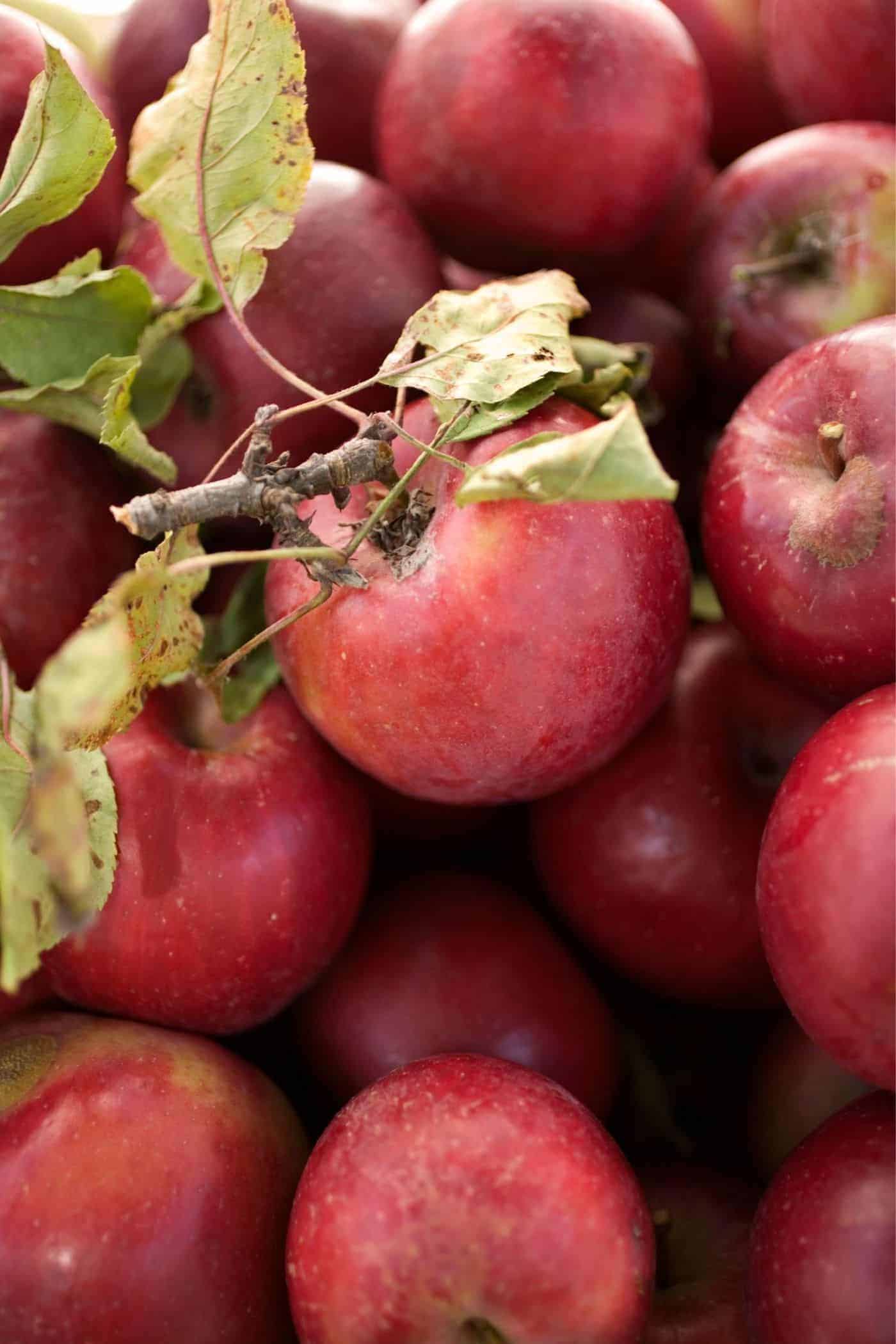
Average cost
Rome apples cost about $2 per pound, although the exact price will vary depending on what state you are purchasing them from, what store you are purchasing them from, and when you are purchasing them.
When buying whole apples, always make sure that they are crisp and not heavily bruised. Fresh apples that are not bruised will keep for months, while those with bruises will have a short shelf life.
Storage
Rome apples can be stored for 1 to 2 months in a cold fridge. However, you can keep them tasting somewhat fresh for about 6 months if you keep them in a cold storage area that is 30 to 40 degrees Fahrenheit. Storage is best while also controlling rot by removing any apples with signs of bruising, brown spots, or softness.
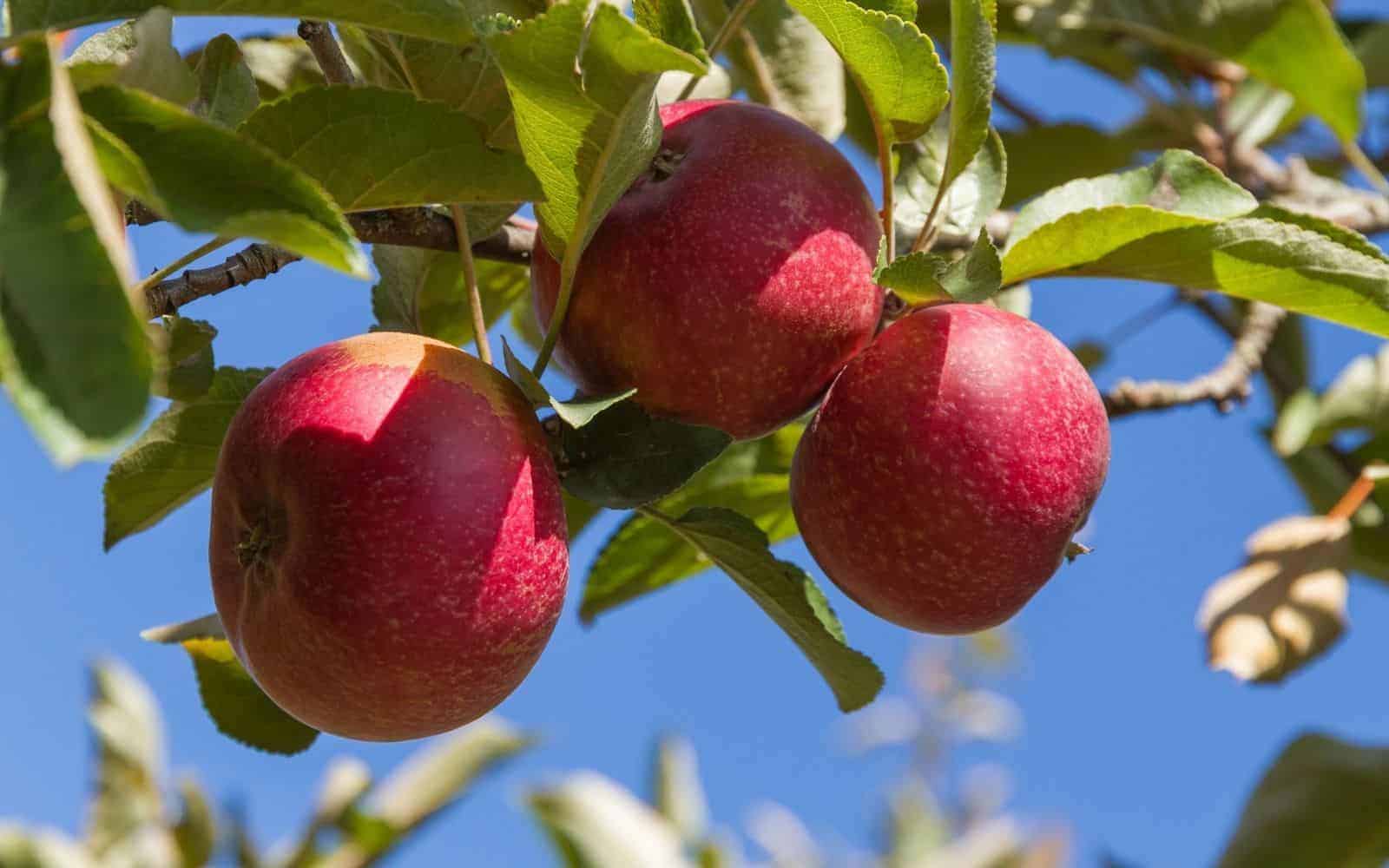
Growing Rome apples
Rome apples are among the easier heritage apple varieties to grow. This variety can be grown in Zones 5-9 and prefers well-drained soil and a full-sun planting location. Many Rome trees are somewhat compact, making them a good choice for home growers.
Rome apple trees are among the last to blossom in the apple orchard. Thinning some young fruits may result in larger apples, although this variety can produce medium-large apples without much thinning.
Rome is a rare self-fruitful apple tree variety. That said, it is most commonly grown alongside other late bloomers to enhance pollination. Good pollination partners for a Rome apple tree include Fuji, Braeburn, Enterprise, Northern Spy, Keepsake, and ornamental crabapples.
Prune apple trees each year during winter or early spring. Start by removing the vertical water sprouts before moving on to remove any inward-growing branches or branches that rub on other branches. Branches that are dead, damaged, diseased, or dying can be removed at any time of year.


